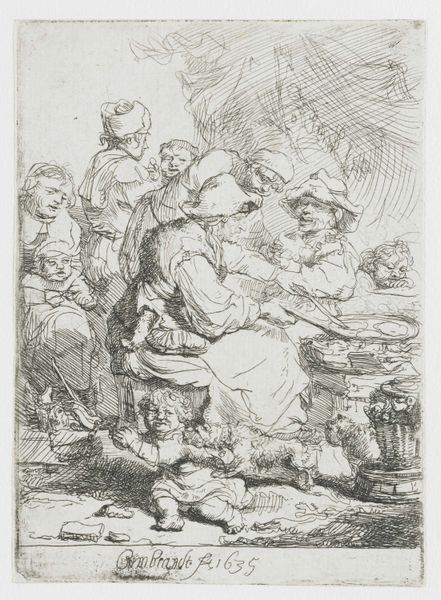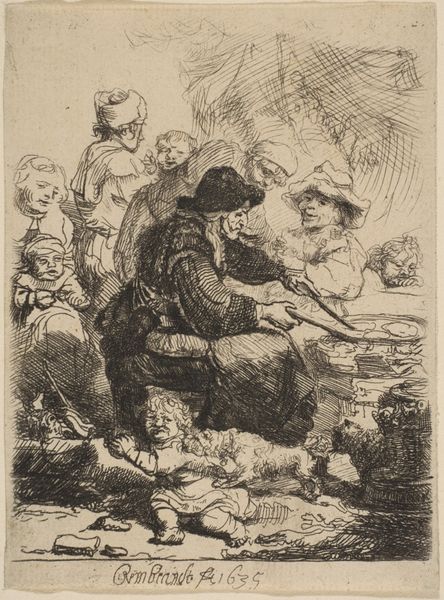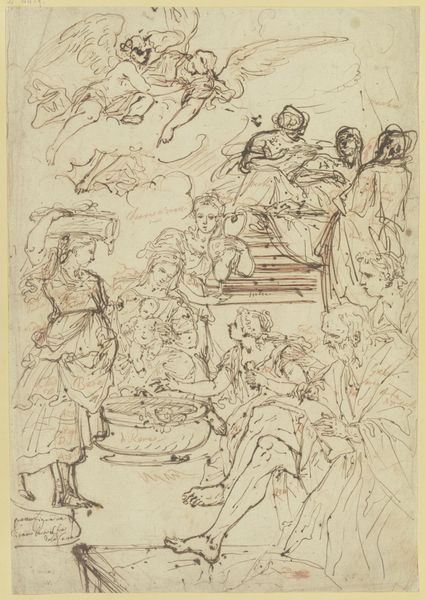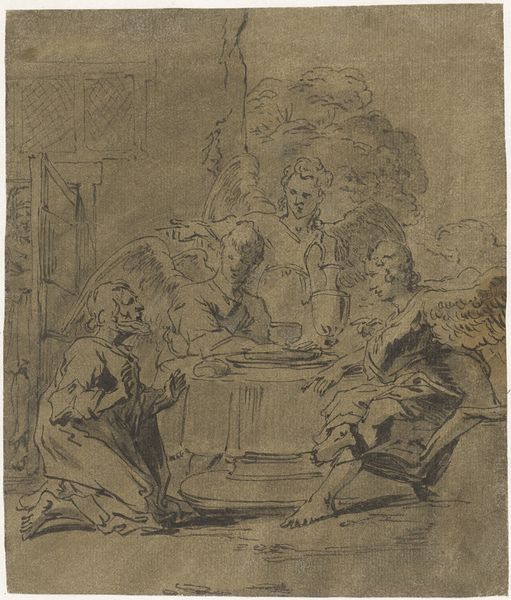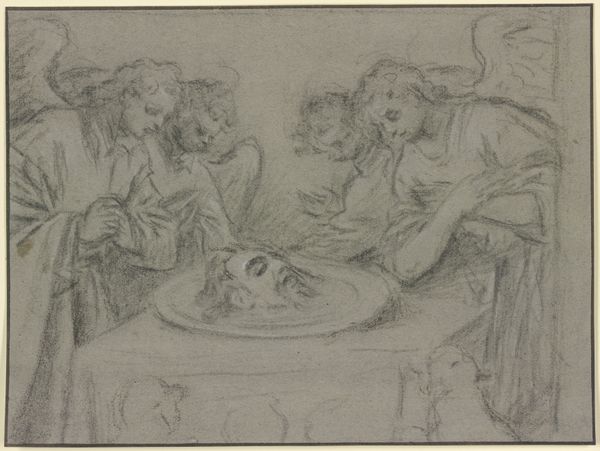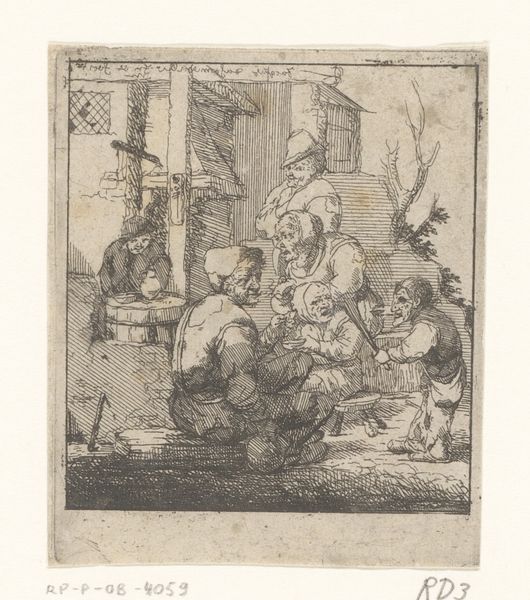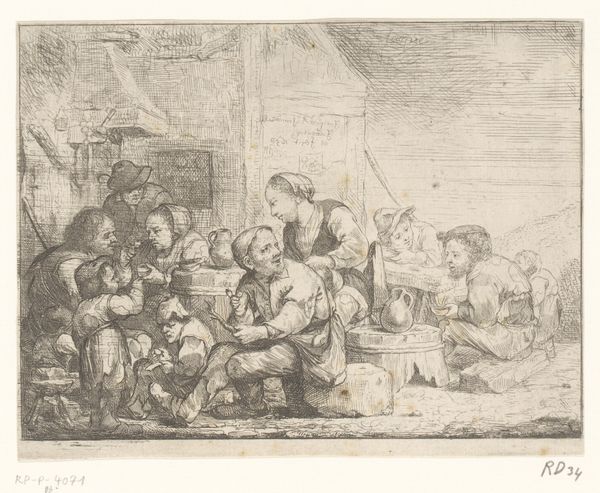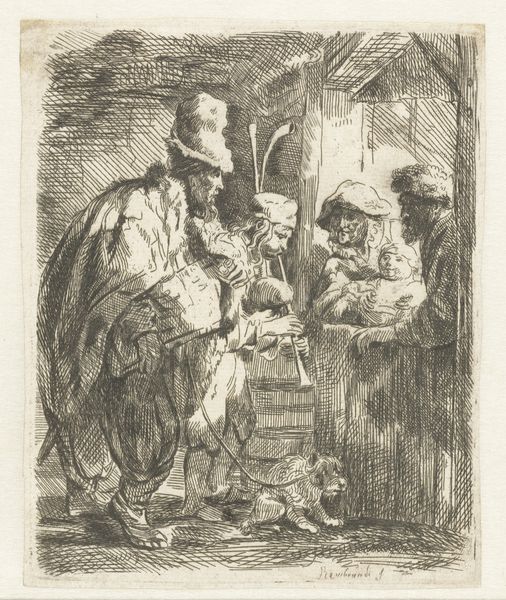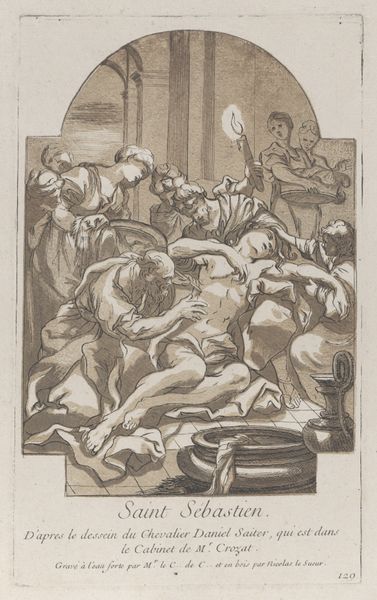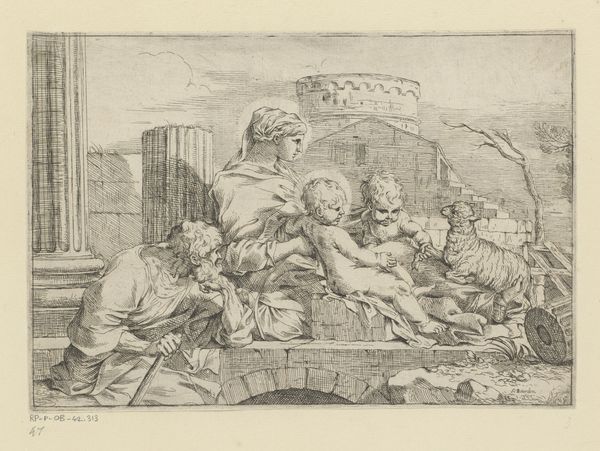
drawing, print, etching, pen
#
portrait
#
drawing
#
baroque
#
dutch-golden-age
# print
#
pen sketch
#
etching
#
pencil sketch
#
figuration
#
pen
#
genre-painting
Dimensions: height 109 mm, width 78 mm
Copyright: Rijks Museum: Open Domain
Curator: Oh, my, this little etching just bursts with life, doesn't it? There's so much happening within the frame, it's like a captured moment of utter domestic chaos—cozy, though, if that makes sense. Editor: Chaos, definitely. The sheer number of figures crowded into the space creates a kind of visual density. Before we delve further, this etching is titled “The Pancake Woman” by Rembrandt van Rijn, created in 1635, and is part of the Rijksmuseum's collection. Curator: "The Pancake Woman!" Of course! Look at her, utterly absorbed in her task, spatula in hand, those fluffy discs probably flying hot off the griddle. It reminds me of my own grandmother and her impossibly high stacks. It seems so...casual for Rembrandt, less formal. Editor: That's interesting—this is part of what appeals to me. While Rembrandt is known for grand portraits and biblical scenes, his genre scenes provide glimpses into everyday life. I'm drawn to the diverse representations, seemingly capturing people across the spectrum of age and social position who all gather around what reads as "poverty." Curator: There's a shadow that hints at a figure hidden behind the woman; her back faces the people as she appears consumed by the responsibility. She seems to labor for her people. Did the "pancake woman" have autonomy or was it pure submission? It really is an etching filled with paradoxes; the joyful and melancholy... Editor: Exactly. The choice of pancake-making is strategic here, not casual. We should think about pancakes' own etymology tracing to the medieval era that signified a sort of "survival cake," and this could be reflective of Rembrandt's commentary on early labor in the Dutch Golden Age where women's contributions in society were dismissed and obscured. Even down to the fine etching lines. What kind of hidden symbolism do you notice in the technical details? Curator: Well, Rembrandt was a master of light and shadow and it’s all so scratchy here, full of scribbled, anxious energy. It really does point to the energy in poverty. Perhaps not meant to glorify that image. He makes use of those deep blacks to ground us, while also keeping those figures in the background indistinct. So many faces are present yet nameless... and therefore all of us at once? Editor: Possibly. And perhaps this piece nudges us to reflect not just on 17th-century Dutch society, but also to engage in an ethics of looking—challenging us to truly "see" those who have historically been obscured. A figure frozen in temporality can still provoke powerful dialogues on contemporary gender, class, and social politics. Curator: That’s it; thanks to Rembrandt, even a simple pancake carries such heft and I suppose that is the beauty of the still moving image!
Comments
No comments
Be the first to comment and join the conversation on the ultimate creative platform.
